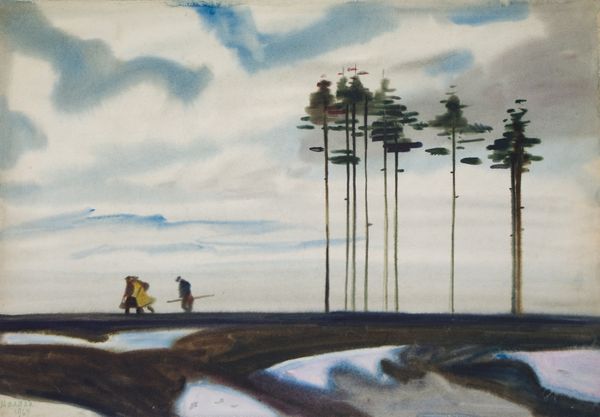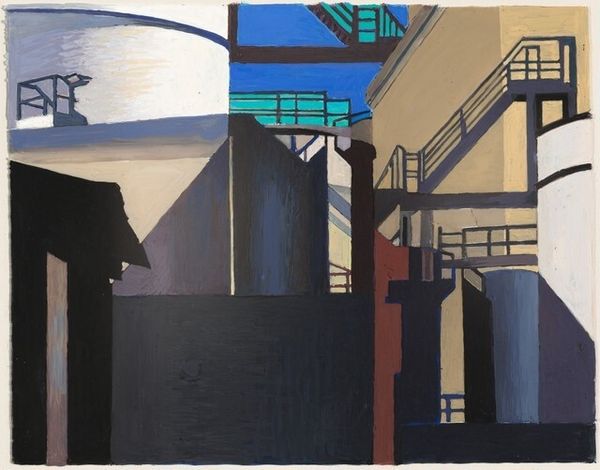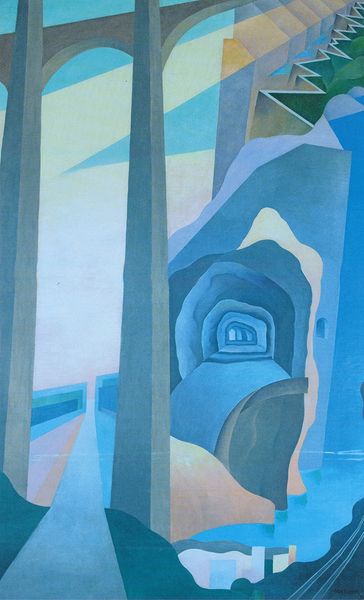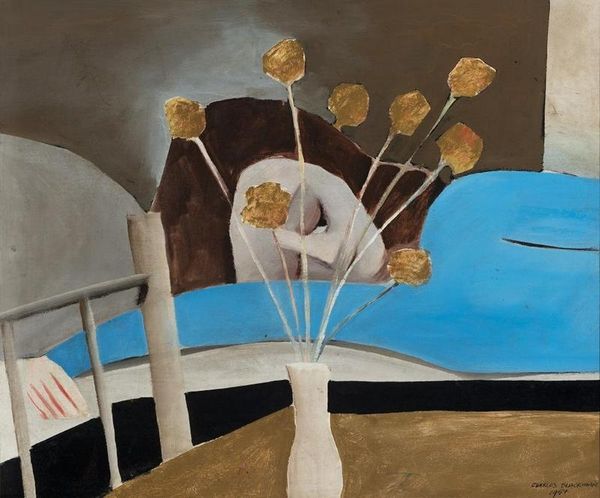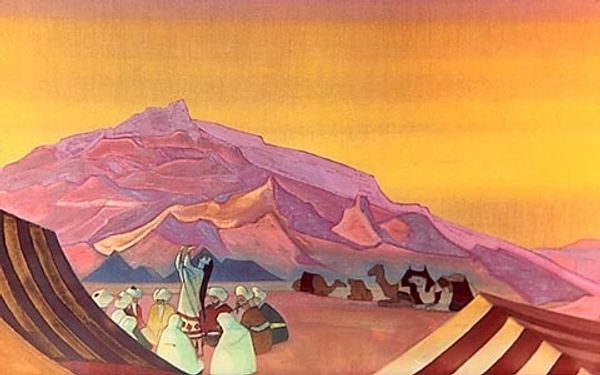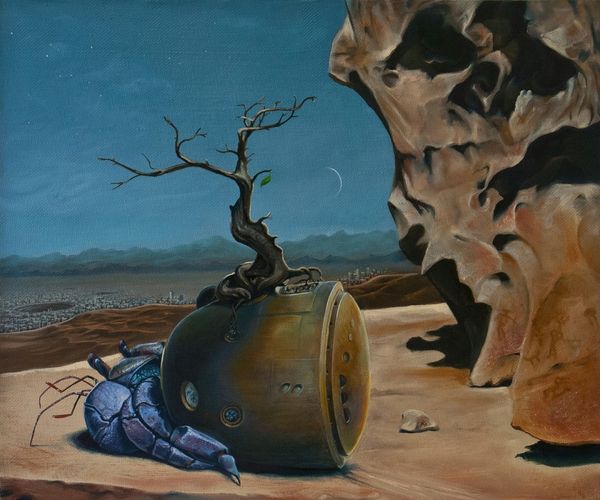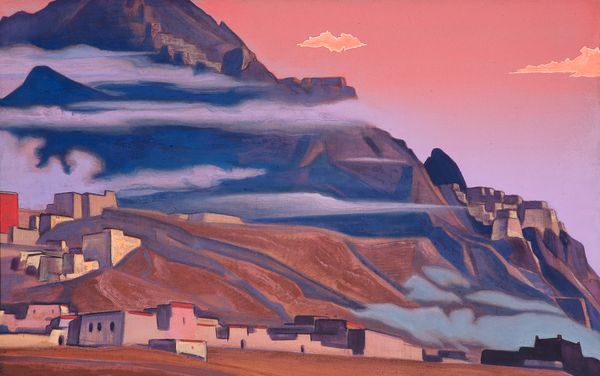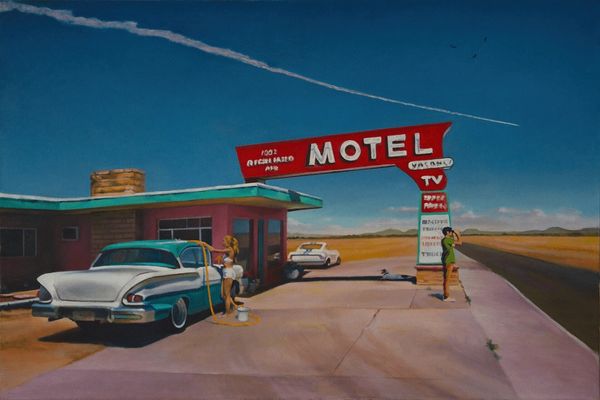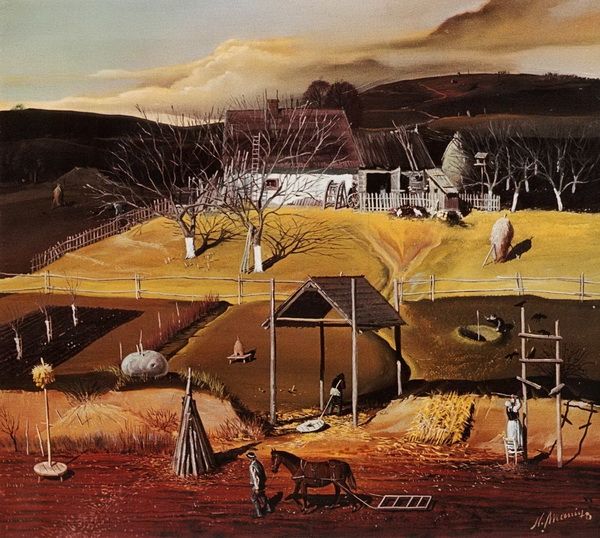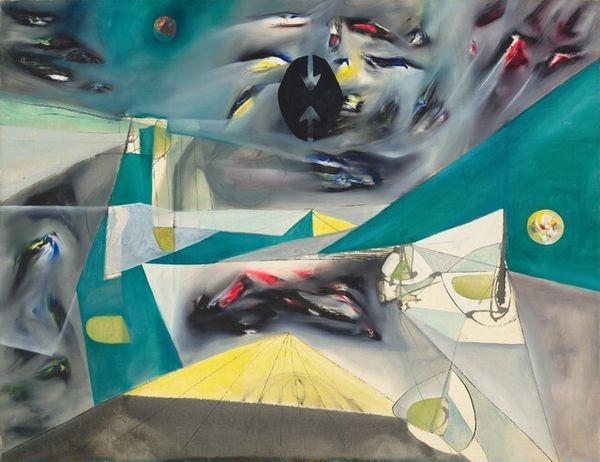
Dimensions: support: 597 x 806 mm
Copyright: © Tate | CC-BY-NC-ND 4.0 DEED, Photo: Tate
Editor: Here we have Tristram Hillier's "La Route des Alpes," currently residing in the Tate Collection. The landscape feels so precise, almost unsettlingly still. What's your take on how Hillier portrays this scene? Curator: The stillness, I think, speaks volumes. Hillier’s hyper-realism captures a landscape marked by human intervention – power lines, roads, warning signs. This isn't a romantic vista, but a space where nature is thoroughly mediated and controlled. How does that tension between the natural and the industrial resonate with you? Editor: I see what you mean, that tension is really clear. It's almost like a stage set, waiting for something to happen, but nothing ever does. Curator: Exactly! The potential of progress, yes, but at what cost? This controlled landscape makes us question whose vision of progress is being imposed and how it impacts the very fabric of the natural world. I wonder if that resonated with Hillier and his contemporaries after the war. Editor: I'm definitely going to think about this work differently now. The scene's tension really makes sense in light of postwar anxieties.
Comments
tate 7 months ago
⋮
http://www.tate.org.uk/art/artworks/hillier-la-route-des-alpes-n05447
Join the conversation
Join millions of artists and users on Artera today and experience the ultimate creative platform.
tate 7 months ago
⋮
Hillier studied at the Slade School of Art, London, in 1926, and then in Paris. He lived in the South of France until 1940, and this picture was painted in 1937 when he was staying near Vence. The artist later wrote of the work: 'Here I started to paint landscape again, not in my earlier manner en plein air, but attempting to construct my pictures from rough drawings which I would elaborate in the studio, in the style of the Flemish and Italian masters whose work I had recently had so much opportunity of studying. This was the beginning of my ultimate phase in painting, and became the manner in which I have worked ever since.' Gallery label, September 2004
